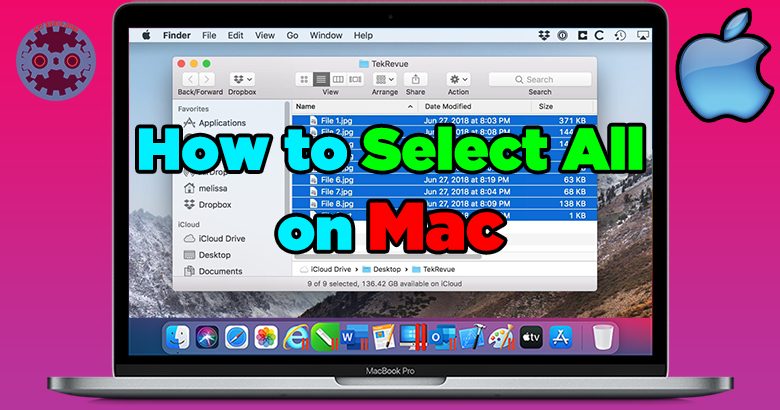Looking to troubleshoot your MacBook’s network connection? Wondering how to ping MacBook? Look no further! In this article, we’ll guide you through the steps to ping your MacBook and diagnose network issues like a pro. Whether you’re experiencing slow internet speeds or want to ensure your device is connecting properly, pinging your MacBook is a powerful tool that can provide valuable insights. So, let’s dive in and discover how to ping MacBook and optimize your network performance effortlessly.
Table of Contents
- 1 How to Ping MacBook
- 2 Frequently Asked Questions
- 2.1 How do I ping a MacBook from another device?
- 2.2 How can I find the IP address of my MacBook?
- 2.3 Can I ping my MacBook from another device on a different network?
- 2.4 Why am I getting “Request Timed Out” when pinging my MacBook?
- 2.5 Can I ping my MacBook using its hostname instead of the IP address?
- 3 Final Thoughts
How to Ping MacBook
Introduction
Pinging a MacBook is a useful troubleshooting technique that allows you to check the connectivity between your device and another computer or network device. It helps determine if the target device is reachable and if there are any network issues. In this comprehensive guide, we will explain everything you need to know about pinging a MacBook. From understanding what ping is to executing the process step-by-step, we’ve got you covered.
Table of Contents
What is Ping?
Ping is a network diagnostic tool used to test the connectivity between two devices in a network. It sends a small data packet called an ICMP Echo Request to the target device and waits for an ICMP Echo Reply. The time taken for the packet to travel to the target device and back is measured, known as the round-trip time (RTT). Ping also reports the success or failure of the connection and provides information about the quality of the connection.
How Ping Works
When you ping a device, your MacBook sends out ICMP Echo Request packets to the target device’s IP address. The target device receives the packet, processes it, and sends back an ICMP Echo Reply packet to your MacBook. The time it takes for this exchange to occur is measured and reported by the ping command.
Why Ping a MacBook?
There are several reasons why you might want to ping a MacBook:
1. Network Troubleshooting: Pinging can help identify network issues, such as high latency or packet loss.
2. Testing Connectivity: You can use ping to check if your MacBook can communicate with another device or website on the network.
3. Monitoring Network Stability: By regularly pinging a MacBook, you can monitor its network connection over time and track any fluctuations in RTT or connection failures.
How to Ping a MacBook
To ping a MacBook, follow these steps:
1. Open Terminal: Launch the Terminal application on your MacBook. You can find it by searching for “Terminal” in Spotlight or navigating to “Applications” > “Utilities” > “Terminal.”
2. Type the Ping Command: In the Terminal window, type the following command:
“`
ping
“`
Replace `
3. Press Enter: Press the Enter key to execute the command.
4. Interpret the Results: The ping command will start sending ICMP Echo Request packets to the target device. You will see the round-trip time (RTT) for each packet, as well as statistics on packet loss and overall connectivity. You can stop the ping process by pressing Control + C.
Additional Ping Options
The ping command offers various options to customize the ping process. Here are some useful options you can use:
– -c : Specifies the number of packets to send before stopping the ping process. For example, -c 5 will send 5 packets.
– -i : Sets the interval between each packet in seconds. For example, -i 0.5 will send packets every 0.5 seconds.
– -s : Defines the size of the ICMP Echo Request packet in bytes. For example, -s 100 will send packets of 100 bytes.
Troubleshooting Ping Issues
While pinging a MacBook is usually a straightforward process, it’s essential to know how to troubleshoot any issues that may arise. Here are some common troubleshooting tips:
1. Check Network Connectivity: Ensure that your MacBook is connected to the network correctly and that there are no issues with Wi-Fi or Ethernet connections.
2. Verify IP Address or Hostname: Double-check the IP address or hostname you are pinging. Typos or incorrect addresses can lead to ping failures.
3. Firewall Settings: Check if any firewall settings on your MacBook or the target device are blocking ICMP Echo Requests. Temporarily disable firewalls to see if it resolves the issue.
4. Network Congestion: High network congestion can result in increased ping times or packet loss. Test the ping at different times to see if it improves.
5. Restart Network Devices: If you’re experiencing persistent ping issues, try restarting your MacBook, modem, router, or any other network devices involved.
Ping Tools and Software
Beyond the built-in ping command, there are specialized ping tools and software available that offer advanced capabilities for network diagnostics. Some popular options include:
– PingPlotter: Provides visual traceroute and ping analysis for Windows and macOS.
– Colasoft Ping Tool: A graphical ping utility for Windows that supports multiple IP addresses and configurable parameters.
– Gping: A command-line tool for Windows, macOS, and Linux that extends the standard ping command with features like geolocation and graphing.
Pinging a MacBook is a straightforward process that can help you diagnose network issues, test connectivity, and monitor network stability. By following the steps outlined in this guide, you can effectively ping a MacBook and troubleshoot any connectivity problems that may arise. Remember to use the additional ping options and explore specialized ping tools to enhance your network diagnostic capabilities.
Frequently Asked Questions (FAQ)
- Can I ping a website or only IP addresses?
- How do I find the IP address of a website?
- What is considered a good ping time?
- Can I ping multiple devices simultaneously?
How to Ping Using the Terminal App on a Mac : Internet & Mac Tutorials
Frequently Asked Questions
How do I ping a MacBook from another device?
To ping a MacBook from another device, follow these steps:
1. Open the Terminal application on the device you want to ping from. This can be another MacBook, a Windows computer, or even a smartphone.
2. Type the command “ping” followed by the IP address or hostname of the MacBook you want to ping. For example, if the MacBook’s IP address is 192.168.0.100, you would enter “ping 192.168.0.100” in the Terminal.
3. Press Enter to execute the ping command. The Terminal will start sending ICMP echo request packets to the specified MacBook.
4. You will see a series of responses in the Terminal window, indicating whether the MacBook is reachable and how long it takes for each packet to make a round trip. If the MacBook is online and responding to pings, you will see “Reply from” messages.
How can I find the IP address of my MacBook?
To find the IP address of your MacBook, you can follow these steps:
1. Click on the Apple menu () in the top-left corner of the screen and select “System Preferences.”
2. In the System Preferences window, click on the “Network” icon.
3. Select your active network connection from the list on the left-hand side. It could be Wi-Fi, Ethernet, or any other network interface.
4. On the right-hand side, you will see the IP address assigned to your MacBook. It will be listed under the “Status” section.
Can I ping my MacBook from another device on a different network?
Yes, you can ping your MacBook from another device on a different network, but there are a few prerequisites:
1. The MacBook should have a public IP address or a port forwarding configured on its network router.
2. The network router should allow incoming ICMP echo requests (ping) from external networks.
If these conditions are met, you can ping the MacBook by using its public IP address or the forwarded port number in the ping command from the external device.
Why am I getting “Request Timed Out” when pinging my MacBook?
There are a few possible reasons why you might receive “Request Timed Out” responses when pinging your MacBook:
1. The MacBook’s network connection may be disabled or turned off. Check the network settings on your MacBook to ensure it is connected to the network.
2. The MacBook’s firewall settings may be blocking incoming ICMP echo requests. Adjust the firewall settings to allow ping requests if necessary.
3. The network router between the devices may not be configured to allow ICMP traffic. Consult the router’s documentation or contact the network administrator to enable ICMP requests.
Can I ping my MacBook using its hostname instead of the IP address?
Yes, you can ping your MacBook using its hostname instead of the IP address. To do this, simply replace the IP address in the ping command with the hostname.
For example, if the hostname of your MacBook is “mymacbook,” you would enter “ping mymacbook” in the Terminal or command prompt of the device you are pinging from. The device will resolve the hostname to the corresponding IP address and send ICMP echo requests to it.
Final Thoughts
In conclusion, pinging your MacBook is a straightforward process that can help troubleshoot network connectivity issues. By utilizing the Terminal application, you can easily send a ping command to your MacBook’s IP address or hostname. This can be done by opening Terminal, typing ‘ping’ followed by your MacBook’s IP address or hostname, and pressing Enter. The ping command will then send a series of packets to your MacBook and display the response time. By understanding how to ping your MacBook, you can efficiently diagnose network problems and ensure smooth connectivity.

